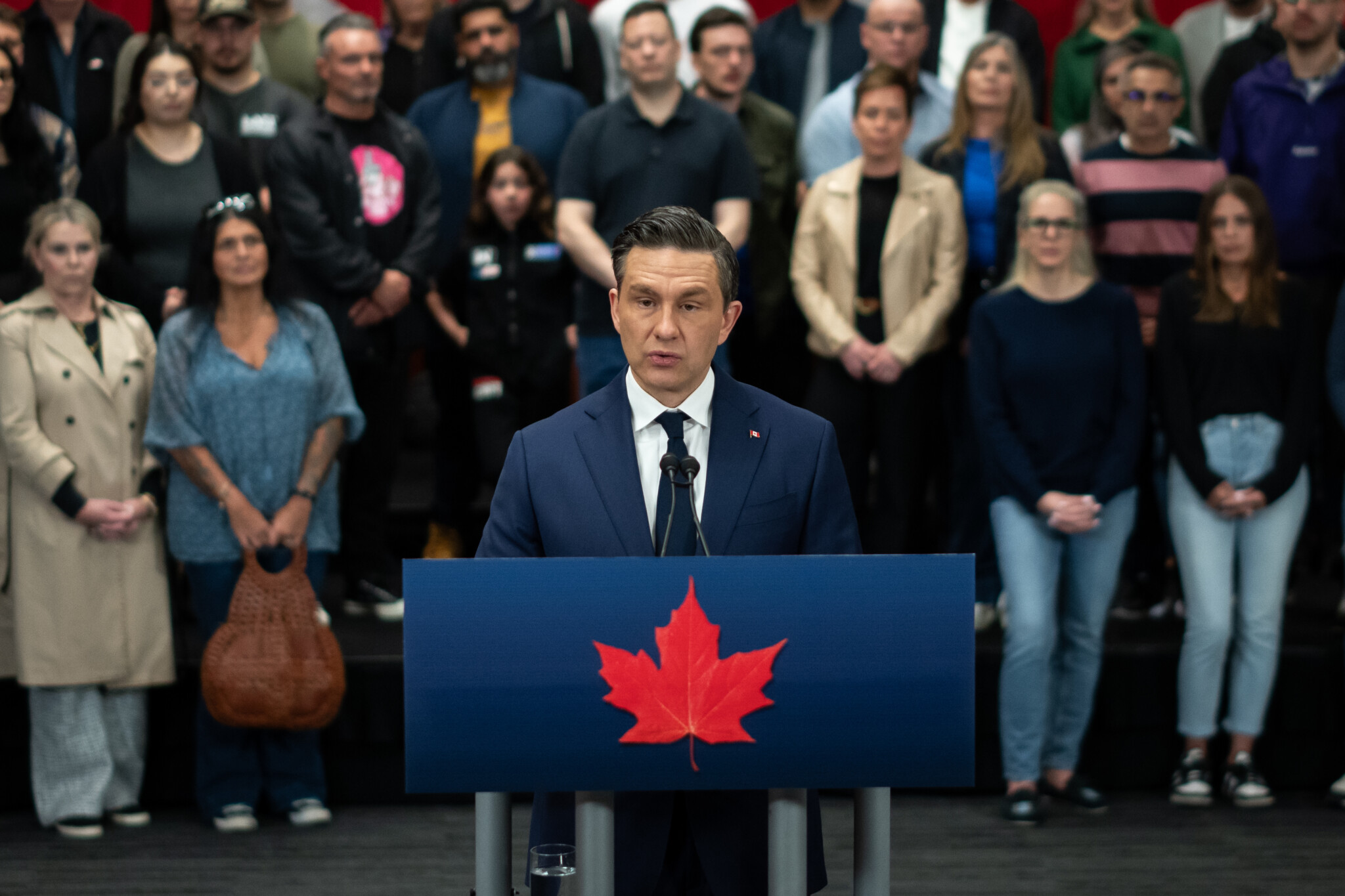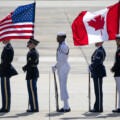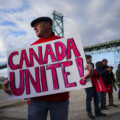Welcome to Need to Know, The Hub’s roundup of experts and insiders providing insights into the federal election stories, policy announcements, and campaign developments Canadians need to be keeping an eye on.
Who’s voting Conservative these days? It might surprise you
By Bryan Breguet, an economist at Langara College in Vancouver
Pierre Poilievre is unlikely to become prime minister next Monday, unless the polls prove to be very wrong. But even if the Tory leader fails to win the most seats, numbers show that he has made gains with some groups that are significantly changing the coalition of voters supporting the Conservative Party.
Aggregating from the bevy of polls available, we see that compared to 2021, the Tories are up the most with the 18-34 voters (13 points). Enough actually that they could win that demo outright, a big change from four years ago when the NDP was well ahead in that group and the Tories were third. The collapse of the New Democrats in this demo (-18 percent, the most in any demo) is staggering.
On the other hand, the 55-plus are avoiding Poilievre. He’s doing literally worse than O’Toole (by 3 points) despite the party being up overall. The “Boomers for Carney” meme is very real, as the new Liberal leader sees the best improvement (12 points) with this group.
Education-wise, the Tories are making gains with people who have a high-school diploma (+6) but dropping with university-educated (-1). The Liberals are crushing it with the degree holders (+15 percent) and winning this demo 54 to 28. As for income, the Tories are improving with the people making $50k or less (+9) while losing high-income individuals (-3 percent).
Finally, we don’t have a lot of data regarding ethnicity, but it appears the Tories are making gains with East and South Asian voters. That would be in line with what happened to the BC Conservatives last year.
So the Poilievre coalition is younger, less educated, lower-income, and more diverse. It could cause some surprises to the seat projections next week.
The difference is in the details between the Liberal and Conservative housing plans
By Mike Moffatt, founding director of the Missing Middle Initiative and co-host of the Missing Middle Podcast.
The Liberal and Conservative housing plans are more alike than they are different. Both parties agree that municipal development charges are too high, they agree that federal land should be used to build housing, and they agree that targeted tax cuts can help stimulate housing construction. They also both agree that immigration levels should not exceed Canada’s capacity to build housing, though neither has shown their math on how to estimate the optimal level of population growth.
There are differences in the details. The Conservatives would eliminate the GST for all buyers of newly constructed homes worth under $1.3 million, a plan that will stimulate far more ownership housing construction than the highly limited Liberal cut, which would only apply to homes under $1 million, and only for first-time homebuyers. On the other hand, the Liberal reintroduction of the 1970s era MURB (Multiple Unit Residential Building) tax provision will stimulate more rental construction than any measure in the Conservative plan.
Even the platform differences have similarities. The Conservatives are proposing to scrap the Liberal Housing Accelerator Fund and replace it with a program that would do roughly the same thing in the same way—provide municipalities with funding in exchange for reforms.
Both parties are promising that their plans will double housing starts, to nearly 500,000 a year. Neither plan is anywhere near ambitious enough to bring us to that figure under the current economic environment, where new condo construction in the Greater Vancouver and Greater Toronto Areas has ground to a halt.
The impossibility of building 500,000 homes a year is particularly problematic for the Conservatives, who, unlike the Liberals, have incorporated the extra revenue caused by the economic growth associated with hitting that goal into their budgetary plans. Setting an unachievable goal, assuming you will hit that goal, and pre-spending the economic growth caused by achieving that goal, is a first for a federal platform. Let’s hope it is also a last.

Prime Minister Mark Carney announces funding for houses as Edmonton Mayor Amarjeet Sohi listens during a visit to Edmonton, Thursday, March 20, 2025. Jason Franson/The Canadian Press.
The Liberals’ outsized social media spend is a considerable advantage over the Conservatives
By Cole Hogan, a conservative strategist
From April 13 to April 19, the fourth week of the campaign, Pierre Poilievre’s Conservatives spent $459,000 on Meta platforms. The Conservative ad spend remains static with the previous week’s spend, $458,000 from April 6 to April 12.
Mark Carney’s Liberals spent $825,000 on Meta platforms from April 13 to April 19, surpassing the Conservative ad spend of $459,000 by $366,000. The $825,000 spend by the Liberals is an increase of $312,000 from their ad spend the week prior, April 6 to April 12, where Liberals spent $513,000. This is a significant increase in the weekly Liberal spend and represents a considerable advantage for the Liberals.
In the first three weeks of the election, Liberals spent $682,000, $697,000, then $513,000. In the first three weeks of the election, Conservatives spent $698,000, $565,000, then $458,000. While the gap between the amount spent by Liberals and Conservatives narrowed in the third week of the campaign, April 6 to 12, last week, April 13 to April 19, the Liberal spend skyrocketed to $825,000 while the Conservative spend remained the same. Throughout the timeframe of the election, the Liberals have now spent the highest weekly amount of all parties. The final week of the campaign will likely represent a considerable ad spend for the Liberals and the Conservatives.
The most viewed Conservative advertisement is currently a static image ad of Pierre Poilievre in front of a Canadian flag with a text banner that reads, “Do you think it’s time for Canada to unleash its full potential?” The most viewed Liberal Party ads are currently two French language video ads featuring Melanie Joly and Francois-Philippe Champagne speaking about Mark Carney. Both ads are running exclusively in Quebec.
The most viewed Mark Carney ad is currently a 30-second video ad featuring clips of the Liberal leader. The ad highlights his time as governor of the Bank of Canada with a Carney voiceover that says, “I know how to manage a crisis.” The ad then switches to a clip of Jim Flaherty saying, “Governor Carney has been an invaluable support.” The ad continues with modern footage of Carney, where he goes on to state, “You have to focus on what you can control. We can’t control President Trump, but we can help you weather the storm. That starts with you keeping more of your paycheque. I will immediately cut taxes for the middle class so it’s easier to pay your bills. We won’t let President Trump knock us around. We will build a Canada you can afford. Because when you’re better off, your country is better off.”
This is the second week that this was the most viewed ad from Mark Carney’s page.
Jagmeet Singh’s NDP weekly ad spend increased from $23,000 to $44,000. This is the largest amount the NDP has spent so far during this election, but it continues to pale in comparison to the amounts spent by Liberals and Conservatives. The NDP’s advertising is primarily focused on advertising local candidates in ridings in Alberta, British Columbia, Northern Ontario, Nova Scotia, and Quebec. There is only one active ad that features Singh, running mainly in Ontario and British Columbia.
More can be done, but at least Conservatives are claiming to care about Canada’s history
By J.D.M. Stewart, author and lead at JDM Policy and Communications
It is rare to see Canadian history in an election platform, but there were some promises made by the Conservative Party in its platform released this week. This was heartening to see for anyone who values the role history must play in our national fabric.
Chief among the Tory promises was funding for “made-in-Canada documentaries” about Canada’s role in “winning the World Wars.” We have lost a generation of young Canadians by not telling our stories in an engaging, visual format. Making them is expensive and vital.
But one is left to wonder: if a Conservative government leaves the CBC to fend for itself financially, who will air the documentaries?
The Conservative platform takes advantage of the low-hanging fruit left behind by a Liberal government that turned its back on Canadian history and symbols. A Pierre Poilievre government will return national icons such as Terry Fox, Vimy Ridge, and Indigenous Peoples to passports. A good move. It will also erect new monuments to our armed forces for their roles in winning various wars from the First World War to Afghanistan.
Missing from the platform? Real, significant money and new directives for change to make Canada’s Library and Archives a world-class institution that is useful and relevant to Canadian historians and lay persons.









